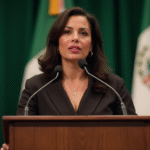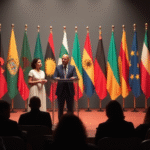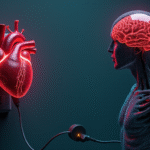Introduction
Just as the most significant moments in life warrant deep reflection, so too do historical milestones. This article delves into Mexico’s Independence of 1810 and its relevance in today’s Mexico, grappling with violence, insecurity, and impunity.
The Timeless Nature of Mexican Independence
What stands out to many historians and advocates for memory is the enduring nature of Mexican Independence, having survived over 215 years and three opposing governments. The commemoration of the armed uprising and the iconic “Grito” ceremony remains the most defining moment for the nation. The reverence for Hidalgo, Morelos, Allende, and Aldama has only been expanded to include Leona Vicario and Josefa Ortiz, reflecting recent gender equity efforts.
The Role of Symbols in National Identity
In an era marked by constant change, it’s essential to consider how a nation’s values can be preserved and its civic symbols institutionalized. How does one blend the old with the new while ensuring that national discourse remains impactful?
Porfirio Díaz and the Angel of Independence
Examining these questions leads us to a clear conclusion. Reading history and reviewing the press reveals that much of Mexicans’ attachment to Independence stems from Porfirio Díaz’s decision to celebrate its centennial and commission an artistic cycle, including a grand column, to the architect and then-director of the Academia de San Carlos, Antonio Rivas Mercado.
Díaz sought to cling to power through the centennial celebrations, using the monument as a means rather than an end. He likely never anticipated that the artistic ensemble would outlive his regime, which he believed to be eternal.
The Angel of Independence: A National Symbol
Since its inception nearly 115 years ago, the Angel of Independence has become an increasingly potent symbol, uniting Mexicans in celebration and civic acts. It has also served as the official repository for national denunciations and dramas.
Magical, legendary, and beloved, the Angel evokes images of Miguel Hidalgo calling for revolt and José María Morelos preparing to embody the greatest strategist, securing liberty.
Comparing Symbolic Efforts
No other president has replicated Díaz’s success in establishing such a powerful symbol. Comparable efforts include the early speeches of Revolutionary governments, the launch of Muralism and the Mexican School of Painting, and López Portillo’s emblematic Palacio Legislativo—a symbol of Mexican democracy, presidentialism, and the PRI.
Failed Symbols of Modern Mexico
In contrast, Felipe Calderón’s “Estela de Luz” and his Memorial to Victims of Violence in Mexico stand as examples of failed symbols. Calderón’s Memorial, inaugurated during his presidency, reflects the shifting values of Mexicans from celebration to acceptance of the aberrant, including the normalization of disappearances and the enduring pain of families affected by violence.
Key Questions and Answers
- How do nations preserve their values over time? By institutionalizing civic symbols and blending traditional elements with contemporary ones.
- What makes the Angel of Independence such a powerful symbol? Its historical significance, association with key figures in Mexico’s Independence movement, and enduring presence since 1910.
- Why have other presidential symbols, like Calderón’s, failed? They often reflect the changing values of a nation rather than enduring principles.
Let us celebrate Mexican Independence with a renewed commitment to upholding the values that inspired it, which stand in stark contrast to the challenges we face today. New and more hopeful symbols are needed, as actions often bring these changes along with them.






